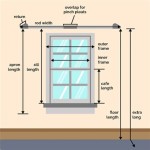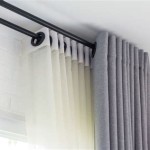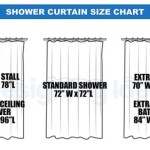Iron-On Hem Tape: A Practical Solution for Curtain Alterations
Iron-on hem tape, also known as fusible hemming tape, is a versatile and convenient material used for creating or altering hems on various fabric items, including curtains. It offers a no-sew solution for achieving a professional-looking finish without the need for a sewing machine or hand-stitching skills. This article will delve into the properties, applications, and proper usage of iron-on hem tape specifically for curtains, providing a comprehensive guide to individuals seeking a simple and effective method for adjusting curtain lengths or creating new hems.
The core functionality of iron-on hem tape lies in its ability to bond two pieces of fabric together through heat activation. The tape consists of a heat-sensitive adhesive layer sandwiched between two layers of a thin, flexible material. When heat is applied via an iron, the adhesive melts and permeates the fibers of both fabric layers, creating a strong and durable bond upon cooling. This process allows for a relatively quick and mess-free alteration compared to traditional sewing methods.
Understanding the Composition and Types of Iron-On Hem Tape
Iron-on hem tape is generally composed of two key elements: the carrier material and the adhesive. The carrier material provides structural integrity to the tape and allows for easy handling and application. Common carrier materials include non-woven fabrics, paper, or thin plastic films. The choice of carrier material often influences the tape's flexibility and suitability for different fabric types. The adhesive itself is typically a thermoplastic polymer, such as polyamide, polyethylene, or acrylic copolymers. The type of adhesive determines the strength of the bond, the washing resistance, and the suitability for different fabrics.
There are various types of iron-on hem tape available on the market, each designed for specific applications and fabric types. Some are designed for lightweight fabrics like voile or sheers, while others are formulated for heavier materials like denim or upholstery fabrics. The width of the tape also varies, with wider tapes generally offering a stronger bond and being more suitable for thicker fabrics or larger hems. Some specialized tapes are even designed for use on delicate or heat-sensitive fabrics, featuring lower melting points and gentler adhesives.
Heavy-duty iron-on hem tape is typically used for curtains made of thick or heavy materials, such as blackout curtains or lined drapes. These tapes are formulated with stronger adhesives that can withstand the weight of the fabric and the stress of repeated use. Lightweight iron-on hem tape is suitable for lighter curtain fabrics, such as sheers or linens. It's essential to choose the appropriate type of tape based on the weight and composition of the curtain fabric to ensure a durable and long-lasting hem.
Another variation is double-sided fusible web, which is essentially iron-on hem tape in sheet form. This type is useful for applying embellishments or appliques to curtains, or for creating more complex hems that require a wider bonding area. Some iron-on hem tapes are also available in different colors to match the fabric, minimizing visibility of the tape at the edges of the hem.
Step-by-Step Guide to Applying Iron-On Hem Tape to Curtains
Applying iron-on hem tape to curtains requires careful preparation and adherence to specific steps to ensure a successful and professional-looking result. The following guide outlines the process in detail:
1. Preparation:
Begin by measuring and marking the desired hem length on the curtains. Use a fabric marker or pins to create a clear and accurate guideline. It is crucial to ensure that the hem is even and consistent across the entire width of the curtain.
Next, pre-wash and iron the curtains to remove any wrinkles or creases. This step is essential to prevent shrinkage or distortion of the hem after the tape is applied. Use the appropriate iron setting for the fabric type to avoid damage.
Finally, prepare the work surface by covering it with a heat-resistant ironing board or a thick towel. This will protect the surface from the heat of the iron and prevent any accidental damage.
2. Application:
Fold the fabric along the marked hemline to create a neat and even fold. Use pins to secure the fold in place, ensuring that it remains consistent throughout the process.
Cut the iron-on hem tape to the desired length, ensuring that it is slightly shorter than the width of the curtain to prevent it from extending beyond the edge of the hem.
Position the hem tape between the folded fabric layers, aligning it along the edge of the hem. Ensure that the tape is evenly distributed and that there are no gaps or overlaps.
3. Ironing:
Set the iron to the appropriate temperature for the fabric type. Consult the iron-on hem tape's instructions for the recommended temperature setting.
Place a damp pressing cloth over the folded hem to protect the fabric from direct heat. This will also help to distribute the heat evenly and prevent scorching.
Press the iron firmly onto the pressing cloth, holding it in place for the recommended amount of time. Refer to the iron-on hem tape's instructions for the specific pressing time.
Move the iron along the hem, overlapping each section slightly to ensure complete bonding. Apply consistent pressure and heat to each section of the hem.
4. Cooling and Finishing:
Allow the hem to cool completely before removing the pins. This will allow the adhesive to set properly and create a strong bond.
Turn the curtain over and repeat the ironing process on the opposite side of the hem. This will ensure that the bond is secure and even on both sides of the fabric.
Inspect the hem carefully to ensure that it is smooth, even, and securely bonded. If any areas appear loose or uneven, repeat the ironing process on those specific areas.
Once the hem is completely cooled and secured, remove the pressing cloth and any remaining pins. The curtains are now ready to be hung.
Advantages and Disadvantages of Using Iron-On Hem Tape for Curtains
Iron-on hem tape offers several advantages over traditional sewing methods for altering curtain hems. Its primary benefit is its simplicity and ease of use. Individuals with no sewing experience can achieve professional-looking results with minimal effort and equipment. This makes it an ideal solution for quick alterations or for those who prefer a no-sew approach.
Another advantage is the speed and convenience of the process. Iron-on hem tape allows for rapid alterations, saving time and effort compared to hand-stitching or using a sewing machine. This is particularly useful for individuals who need to adjust curtain lengths quickly or who have multiple curtains to alter.
Furthermore, iron-on hem tape eliminates the need for specialized sewing equipment, such as a sewing machine, needles, and thread. This can be a cost-effective solution for those who do not own such equipment or who prefer to avoid the expense of professional tailoring.
However, iron-on hem tape also has some limitations. The durability of the bond may not be as strong as a sewn hem, particularly for heavier fabrics or curtains that are frequently washed. The adhesive can also weaken over time or with exposure to high temperatures, potentially causing the hem to come undone.
Another disadvantage is that iron-on hem tape can be more difficult to remove than stitches. Removing the tape can leave a sticky residue on the fabric, which may require special cleaning solutions. In some cases, removing the tape can even damage the fabric, particularly delicate or heat-sensitive materials.
Additionally, the appearance of an iron-on hemmed curtain may not be as polished as a professionally sewn hem. The tape can sometimes be visible at the edges of the hem, particularly if the fabric is thin or transparent. This can detract from the overall aesthetic of the curtains.
The selection of wrong type of tape can also lead to dissatisfaction. Using a lightweight tape on heavy curtains can cause the hem to droop or detach. Choosing a tape unsuitable for the fabric type can cause damage or an unattractive appearance.
Ultimately, the suitability of iron-on hem tape for curtains depends on the specific needs and preferences of the individual, as well as the type and weight of the curtain fabric. For lightweight fabrics and occasional alterations, iron-on hem tape can be a convenient and effective solution. However, for heavier fabrics or curtains that require frequent washing, a sewn hem may be a more durable and reliable option.
Before applying iron-on hem tape to an entire curtain, it is advisable to test it on a small, inconspicuous area of the fabric to ensure compatibility and to assess the durability of the bond. This will help to prevent any unexpected damage or unsatisfactory results.

How To Hem Curtains The Easy Way Whats Ur Home Story Without Sewing Homemade

How To Hem Curtains Without Sewing

Jual 2 Rolls Iron On Fabric Fusing Tape Adhesive For Hem Double Backing Ribbons Curtains 90 Yards Di Seller Homyl Shenzhen Indonesia Blibli

How To Hem Curtains Using Iron On Hemming Tape Lamberts Lately

Using Hem Tape For Curtains

How To Hem Curtains 2 Ways With Or Without Sewing Hello

How To Hang Hem Drapes No Sew Method The Diy Mommy

Easy No Sewing Curtain Hemming Tape

Jual 2 Rolls Iron On Fabric Fusing Tape Adhesive For Hem Double Backing Ribbons Curtains 90 Yards Di Seller Homyl Shenzhen Indonesia Blibli

Ready Made Curtain Iron On Hem Tape Regular Extra Hold Com








